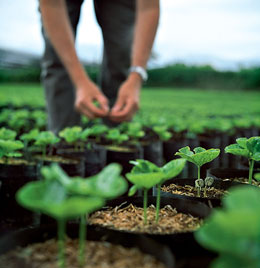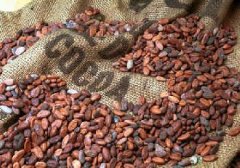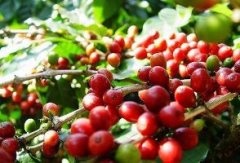The way coffee is grown. A conscientious coffee tree.

The way coffee is grown
Coffee is now widely grown in the ribbon between the Tropic of Cancer. Coffee grown in different regions has different flavors-the unique soil, climatic conditions and planting methods of a country make the coffee produced in that country have a unique flavor. French winemakers call this phenomenon "regional style". Geographically, there are three global coffee growing areas-East Africa and the Arabian Peninsula, Southeast Asia and the Pacific Rim, and Latin America.
A conscientious coffee tree
Like other kinds of fruits, coffee fruits grow on trees. Soil, climate, altitude, and other kinds of plants around the coffee tree can affect the flavor of coffee.
Some kinds of coffee trees can grow to 30 to 40 feet tall. However, in order to facilitate the picking of coffee beans, people often use some methods to make the coffee trees not so tall. On average, a coffee tree produces only enough coffee fruit to bake 0.5 kilograms of coffee powder each year. For most coffee lovers, it only takes a week to finish the coffee!
Arabian coffee and East African coffee
There are two kinds of coffee with important economic value: Arabian beans and East African beans. Arabian coffee grows best at high altitude. its flavor is much more refined than other coffee, and its caffeine accounts for only 1% of the total weight of coffee. As its name suggests. East African coffee has a mellow taste, strong resistance to diseases and insect pests, and high yield per plant. This kind of coffee grows at low altitude and tastes bitter. Starbucks only buys the best quality Arabica coffee.
Harvest
During the harvest season, the coffee trees are covered with bright red coffee fruits. Unroasted coffee beans are just the kernels of coffee fruits.
The skin of the coffee fruit is very thick and the taste is slightly bitter. However, the kernel under the pericarp is sweet and its texture is similar to that of grapes. The inner layer of the kernel is a thin film that protects the seeds. The film is very similar to the protective film of apple seeds. Remove this film and you will see green coffee beans-usually two. After the coffee beans have been washed, they can be roasted.
Important Notice :
前街咖啡 FrontStreet Coffee has moved to new addredd:
FrontStreet Coffee Address: 315,Donghua East Road,GuangZhou
Tel:020 38364473
- Prev

CBB pest found in coffee trees in Hawaii
Coffee berry borer is in the red area of the Big Island (red part). Photo: CBB translated by the Department of Agriculture of Hawaii (HDOA) confirmed on May 12, 2011: coffee pulp borer (CBB) pest (in Pahala in the Ka`u District of the Big Island) was found on a farm in Ka`u District, Hawaii Island. Ka`u is a coffee growing area, which is currently
- Next

Zero contact with coffee coffee comes from Ethiopian caffeine.
Finally, I have an opportunity to witness the formation of coffee. This is after visiting MONTENEGRO National Coffee Park in QUINDIO province of Colombia and a garden coffee farm in MANIZALES city of Caldas province (CALDAS). Coffee comes from Ethiopian curry. In Colombia, it was appointed by a priest from the French Antilles in 1808.
Related
- Beginners will see the "Coffee pull flower" guide!
- What is the difference between ice blog purified milk and ordinary milk coffee?
- Why is the Philippines the largest producer of crops in Liberia?
- For coffee extraction, should the fine powder be retained?
- How does extracted espresso fill pressed powder? How much strength does it take to press the powder?
- How to make jasmine cold extract coffee? Is the jasmine + latte good?
- Will this little toy really make the coffee taste better? How does Lily Drip affect coffee extraction?
- Will the action of slapping the filter cup also affect coffee extraction?
- What's the difference between powder-to-water ratio and powder-to-liquid ratio?
- What is the Ethiopian local species? What does it have to do with Heirloom native species?

